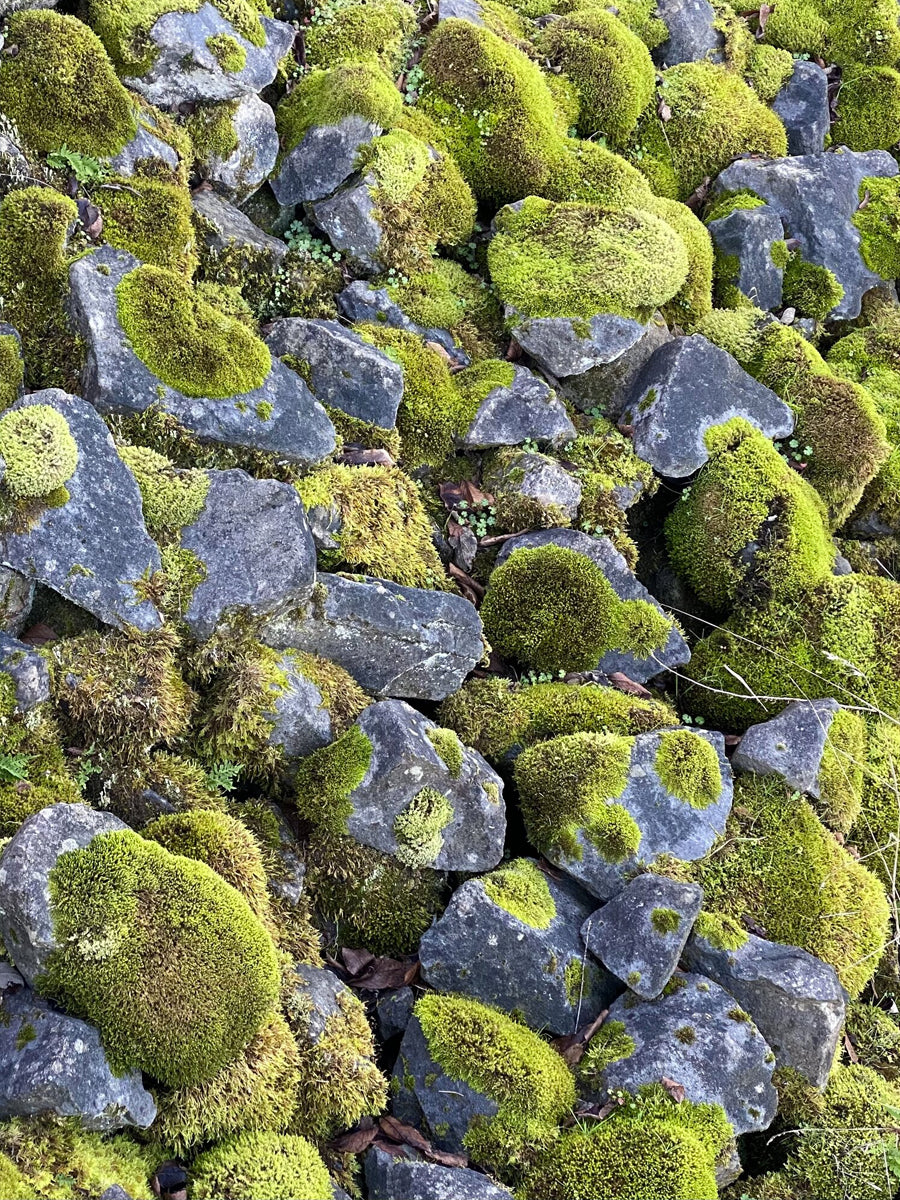
THE MOSS LOVE IS REAL

Did you know moss grows on every single continent in the world? These highly adaptable and ancient plants have been around for over 250 million years and can thrive anywhere plants that photosynthesize grow too. Luminescent mosses have even been found growing inside caves!! Certain types can survive extreme temperatures as high as 100ºC (212º F) and manage to live through temps below -272ºC (-457º F). They can withstand droughts by going dormant and can hold over 20 times their weight in water.
Throughout history mosses have been used as sponges, natural diapers, pillows, bedding, as first aid treatments to pack wounds and cuts and, if absolutely necessary, can be a food source (apparently not delicious or highly nutritious, but edible). Honestly, the more we learn about moss, the more we want to share and celebrate these incredible little plants!
Here are three mosses we use with our houseplants.
-
Sphagnum Moss
The first step is learning the difference between Sphagnum Moss and Peat Moss. Often referred to as ‘peat moss’ or ‘sphagnum peat moss’ these are actually two parts of the same plant. One is sustainable and regenerates every 5-8 years (Sphagnum), while the other takes thousand of years to reproduce (Peat) and should be left undisturbed.
Sphagnum Moss grows along the surface of bogs, swamps or soil wetlands. When harvested sustainably it can regrow quickly (about 5-7 years) without negatively impacting the environment. Peat Moss on the other hand, is sunken Sphagnum Moss growing over thousand of years forming a vital, foundational layer and is responsible for sequestering (soaking up and storing) more carbon than all other types of plant life combined! Peatlands need our protection for a variety of reasons, so let’s be sure to only buy or source sustainably sourced Sphagnum moss. (We’ll add a link at the end of this post to dive deeper into this precious resource).
In our homes, Sphagnum Moss is used for propagating cuttings, wrapping around wood or bamboo to create a Moss Pole, as a decorative soil topper, and to wrap around soil to create Kokedama which is a stunning way to display houseplants where soil is wrapped up in moss. Sphagnum Moss can also be used as a soil amendment for tropical types like philodendron and ferns.
-
Spanish Moss
Spanish ‘Moss’ is not a type of moss at all, but part of the bromeliad family (think pineapple). This silvery grey plant is a flowering epiphyte, just like our beloved Tillandsia. They grow naturally and abundantly in warm, humid environments, generally clinging to tree limbs. It’s important to point out that they grow by draping over trees, they are an epiphyte - not a parasite, meaning they do not feed on the trees that host them, and unless the tree is overrun by Spanish Moss and must fight for sunlight to photosynthesize, these plants and trees live quite harmoniously.
In our home we use Spanish Moss for terrariums, as decorative mulch over potting soil, wrapped around a climbing pole, and for craft projects that need natural filling or stuffing. Did you know that Spanish Moss filament was used as for upholstery in cars, furniture and mattresses? Apparently mattresses made with Spanish Moss were exceptional for climate control keeping things nice and cool!
-
Carpet (Sheet) Moss
Here in the Pacific Northwest we see Carpet Moss everywhere, especially during the winter months when lush green tufts blanket sidewalks, pathways, tree bark, rocks and practically any hard surface that’s left undisturbed for any period of time.
Carpet moss has the unique ability to soak up vast amounts of water in their capillaries and help soak up rainfall and moisture making them perfect for topping of soil in your tropical houseplants that need a little extra humidity and moistness. Carpet Moss can be used with Sphagnum Moss to create Kokedama - a stunning way to display houseplants where the soil is wrapped in moss. Carpet Moss is also a lovely way to add a vibrant pop of green to your terrariums.
Giant Monstera climbing up a tree on the Big Island of Hawaii
Moss Pole
Offering our vining houseplants a moss pole not only helps support their natural climbing tendencies, it recreates their natural environment too, yay!
So how do we encourage them to attach themselves to the pole? After installing the pole you can gently wrap stripes of old t-shirt or natural twine (like jute) around your sturdiest stems and tie them to the pole to encourage root attachment.
Then, you can create yourself a plant care ritual. When you take a few moments a few times a week to thoroughly mist your moss pole, it encourages those lovely roots to grow towards the pole, grab on and climb up which, in turn boosts the overall health of your plant resulting in larger leaves. We love using our Sacred Leaf Tonic for this application as it hydrates and nourishes both the moss and monstera while offering us a dose of aromatherapy too.

Thanks so much for being a part of the Sacred Elements Community!
Best wishes,
Karina and the Sacred Elements Team


